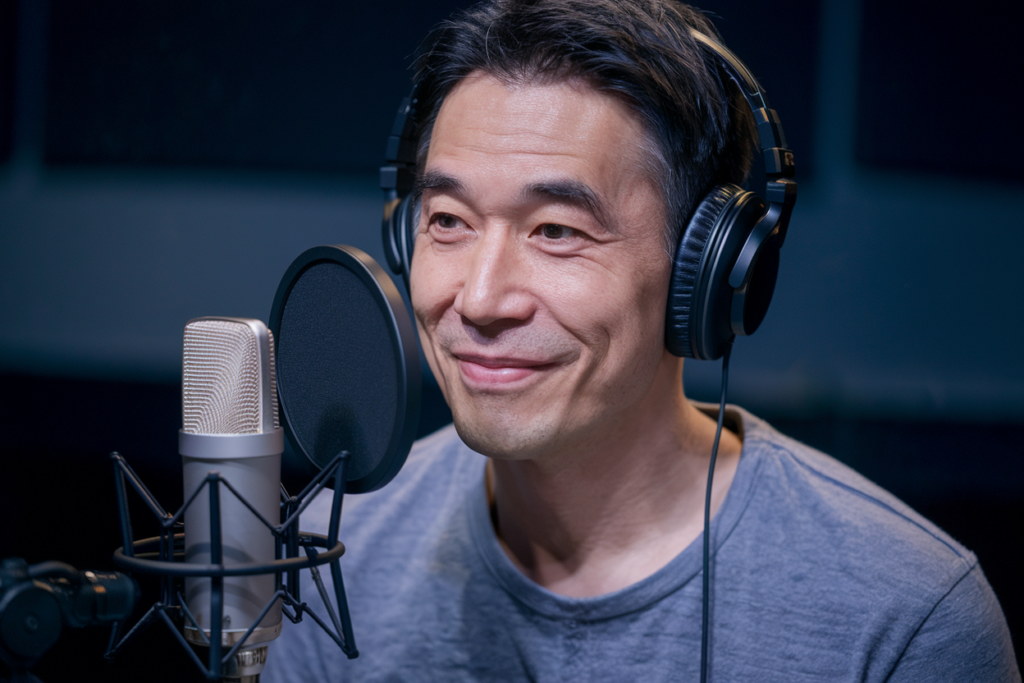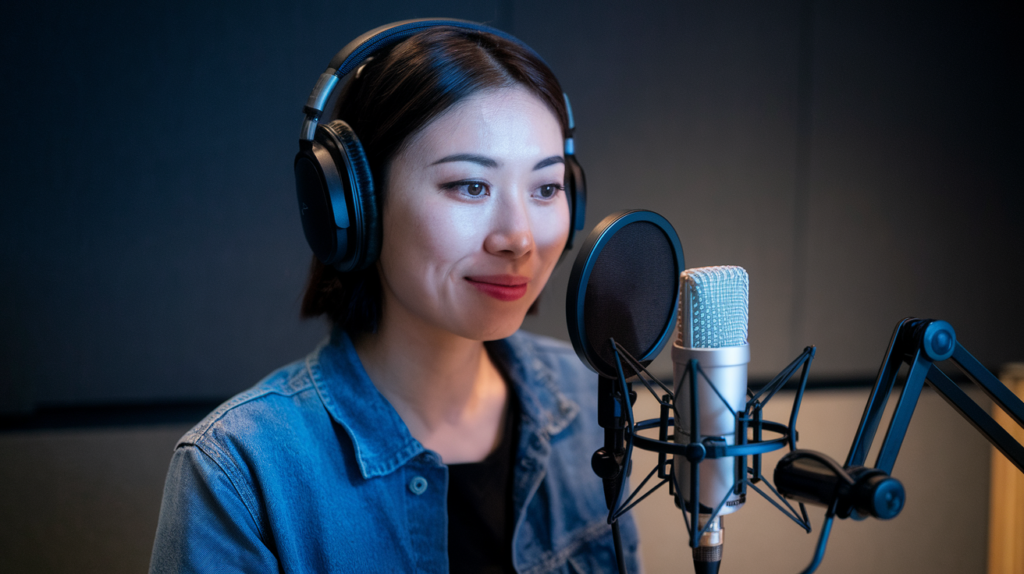Key Takeaways
- Understanding Dialects: Kansai Japanese offers a unique charm and expressiveness compared to Standard Japanese, making it essential for voice actors to grasp both dialects.
- Pronunciation and Intonation: Kansai Japanese features varied intonation and distinct pronunciation that can enhance emotional delivery in voiceovers.
- Cultural Nuances in Vocabulary: Unique expressions and slang in Kansai Japanese create deeper connections with local audiences, enriching the overall impact of voice performances.
- Voiceover Applications: While Standard Japanese is preferred for mainstream media, incorporating Kansai dialect can make projects more engaging, especially in anime and regional commercials.
- Regional Audience Connection: Understanding audience preferences between the two dialects allows for tailored storytelling that resonates effectively with different demographics.
- Versatile Voice Talent: Choosing voice artists skilled in both styles enhances authenticity and relatability, elevating the quality of your voiceover projects.
Ever wondered how Kansai Japanese stacks up against Standard Japanese for voiceovers? If you’re diving into the world of voice acting, understanding these two dialects could be your secret weapon. While Standard Japanese reigns supreme in most media, Kansai’s unique charm offers a refreshing twist that can captivate audiences.
Overview of Kansai Japanese and Standard Japanese
Kansai Japanese, often referred to as the dialect spoken in the Kansai region, includes cities like Osaka and Kyoto. This dialect showcases a unique intonation and vocabulary that sets it apart from Standard Japanese, which is primarily based on the Tokyo dialect. The distinctive charm of Kansai Japanese lies in its expressiveness and humor, making it popular among audiences.
Standard Japanese serves as the lingua franca for media, education, and formal communication across Japan. Most voiceovers utilize this standard form to ensure broad comprehension. In contrast, voice talent proficient in Kansai Japanese can bring a refreshing flair to projects aimed at regional audiences or those seeking authenticity.
Understanding both dialects is crucial for voice actors aiming to connect with diverse listeners. Whether you’re producing commercials or narration, selecting a voice artist familiar with these nuances can enhance engagement. The right choice not only captivates local audiences but also adds depth to your project’s storytelling.
Incorporating both Kansai and Standard Japanese elements into your work provides variety while catering to different preferences. As you explore options for voiceover talent, consider how each dialect complements your project’s goals and audience expectations.
Key Differences Between Kansai Japanese and Standard Japanese
Understanding the key differences between Kansai Japanese and Standard Japanese enhances your appreciation for voiceovers in these dialects. Each brings unique characteristics that impact how messages are conveyed.
Pronunciation Variations
Pronunciation plays a significant role in distinguishing Kansai Japanese from Standard Japanese. In Kansai, the intonation tends to be more varied and expressive. For example, vowel elongation occurs more frequently, giving words a distinctive rhythm. You may notice that certain consonants sound softer or even change entirely compared to their Standard counterparts. This variation can affect the emotional tone of a voiceover, making it essential for voice actors to adapt their delivery based on the intended audience.
Vocabulary Distinctions
Vocabulary also sets these dialects apart significantly. While both use standard terms, Kansai Japanese features unique expressions and slang that resonate with local listeners. Phrases like «akan» (not good) or «maido» (thank you for your patronage) reflect cultural nuances not found in Standard Japanese. A voice artist familiar with these distinctions can create a deeper connection with audiences who relate to such language cues, enhancing the overall impact of the voiceover performance.
Embracing both dialects enriches storytelling opportunities, allowing you to tailor your content effectively and engage diverse audiences through authentic representation in voiceovers.
Voiceover Applications
Kansai Japanese and Standard Japanese both offer unique advantages in voiceover applications. Understanding these differences can help you choose the right voice artist for your project.
Use in Anime and Animation
Anime often showcases diverse characters, making Kansai Japanese a popular choice. Many anime series feature characters from the Kansai region, where this dialect adds authenticity and charm. Voice actors using Kansai intonation bring energy and humor to their performances, enhancing character development. If you’re producing animation with a regional focus, selecting a voice over talent who excels in Kansai Japanese can resonate more with audiences familiar with its nuances.
Impact on Commercial Voiceovers
In commercial contexts, Standard Japanese generally prevails due to its broad recognition. However, incorporating Kansai Japanese can create memorable advertisements that stand out. The playful expressions and distinct intonation of Kansai dialect engage listeners uniquely. Choosing a voice over actor skilled in both dialects allows you to target specific demographics effectively while maintaining overall appeal. Tailoring your message through dialect not only enhances relatability but also strengthens brand connection with your audience.
Regional Preferences in Voiceover Work
When considering regional preferences in voiceover work, understanding the nuances between Kansai Japanese and Standard Japanese is crucial. You might notice that different dialects resonate differently with audiences. For instance, Kansai Japanese, known for its expressiveness and humor, often connects well with regional listeners. This dialect can bring a lively energy to characters or narratives that originate from areas like Osaka or Kyoto.
In contrast, Standard Japanese remains dominant in mainstream media. Its widespread recognition makes it the go-to choice for many commercial voiceovers. Yet, incorporating elements of Kansai Japanese into your projects can create a unique flavor that captures attention. Imagine using those playful expressions and distinctive intonations to engage your audience on a deeper level.
Voice actors skilled in both dialects offer a versatile approach to storytelling. They can tailor their performances based on the target demographic, enhancing relatability and connection with various audience segments. Think about how selecting a voice artist familiar with these regional differences can elevate your project’s authenticity and impact.
For animated series or character-driven content, opting for voice talent who can embody Kansai Japanese adds charm and depth. It makes characters more relatable while delivering punchlines effectively—after all, comedic timing often relies on subtle vocal cues that vary across regions.
Ultimately, recognizing these regional preferences helps you make informed decisions when choosing voice over talent for your projects. Whether it’s through engaging dialogue or capturing local culture’s essence, embracing both Kansai and Standard Japanese opens up new avenues for creativity in voiceovers.
Conclusion
Understanding the differences between Kansai Japanese and Standard Japanese is crucial for anyone involved in voiceover work. By appreciating these dialects, you can significantly enhance your storytelling abilities and connect more deeply with diverse audiences.
Kansai Japanese brings a unique charm and expressiveness that resonates particularly well in character-driven projects, while Standard Japanese maintains its relevance across broader media platforms. Mastering both can give you a competitive edge as you tailor your performances to engage specific demographics effectively.
Ultimately, embracing these nuances allows for richer storytelling opportunities and ensures your voiceovers stand out in today’s dynamic media landscape.
Frequently Asked Questions
What is the main difference between Kansai Japanese and Standard Japanese?
Kansai Japanese features unique intonation, vocabulary, and expressions that differ from Standard Japanese. While Standard Japanese is widely used in media and formal settings, Kansai Japanese offers expressiveness and humor that resonate particularly well with regional audiences.
Why is Standard Japanese dominant in media?
Standard Japanese serves as the lingua franca for communication across Japan. Its widespread recognition makes it the preferred choice for most media formats, ensuring clarity and accessibility for a broad audience.
How can familiarity with both dialects benefit voice actors?
Understanding both Kansai and Standard Japanese allows voice actors to connect better with diverse audiences. It enhances their performance by incorporating cultural nuances, making characters more relatable and improving engagement.
What are some unique features of Kansai Japanese?
Kansai Japanese is characterized by its varied intonation, vowel elongation, softer consonant sounds, and distinctive slang like «akan» (not good) and «maido» (thank you). These features contribute to its expressiveness.
When should voice actors use Kansai Japanese in their work?
Voice actors often use Kansai Japanese in anime or character-driven content where authenticity matters. Its charm adds energy to performances, especially for characters from the Kansai region.
How does dialect choice affect audience engagement in voiceovers?
Choosing a specific dialect can significantly impact how well an audience connects with the content. Using locals’ dialects like Kansai can enhance relatability while targeting specific demographics effectively.
Why are regional preferences important in voiceover work?
Regional preferences help tailor performances to resonate with local audiences. Understanding these nuances allows creators to make informed decisions when selecting voiceover talent that aligns with their target market’s expectations.







